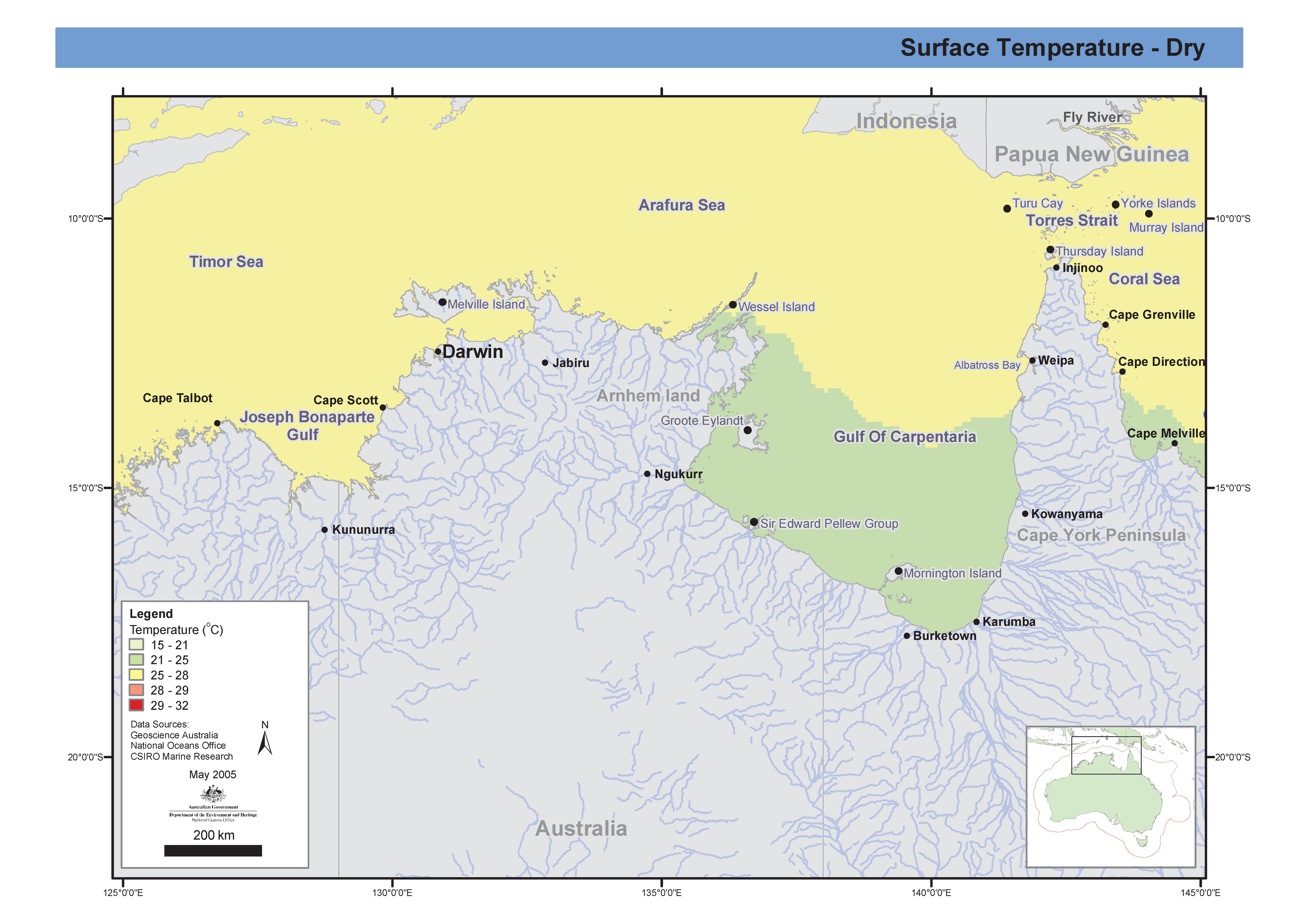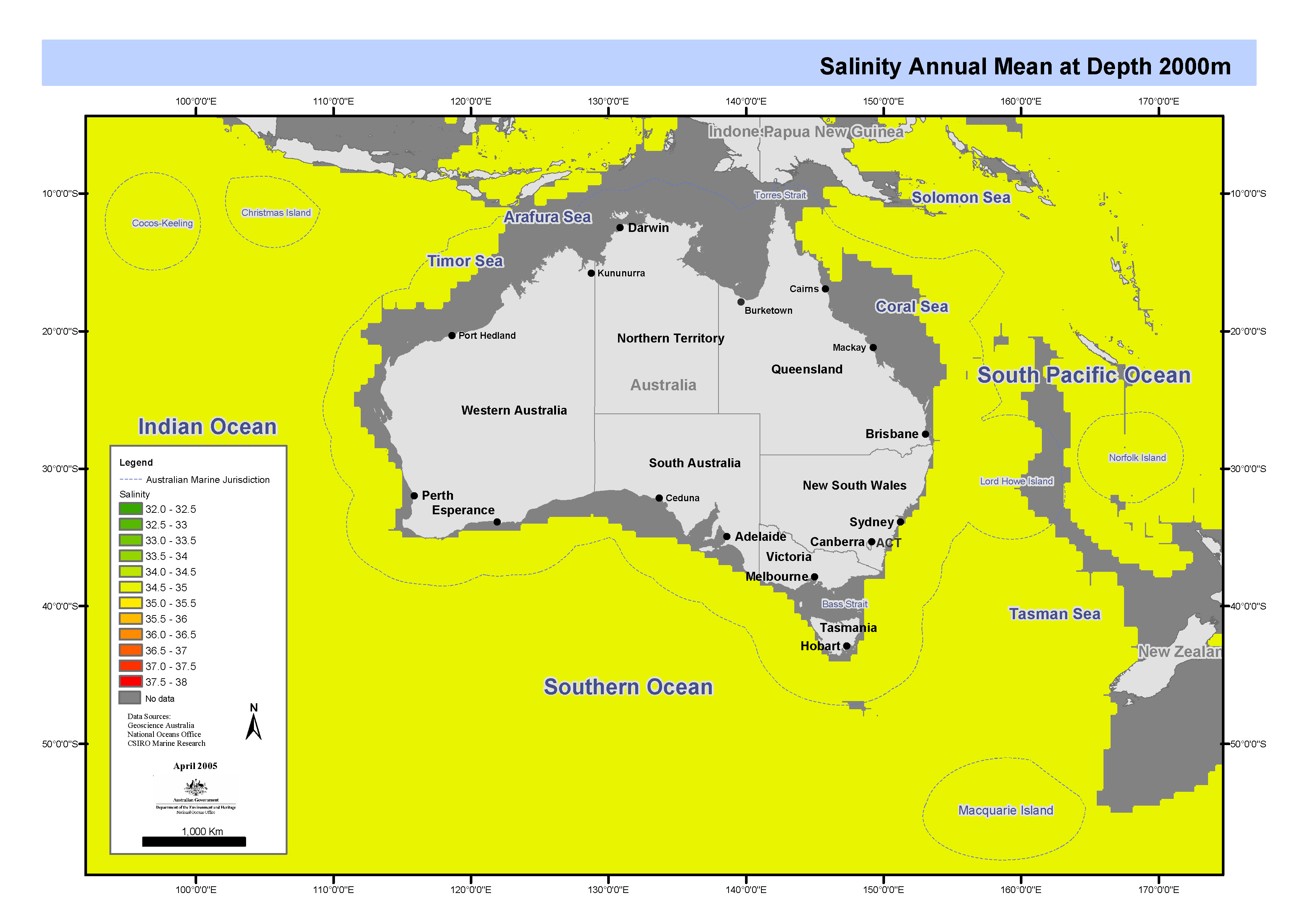Keyword
Earth Science | Oceans | Ocean Circulation | Eddies
20 record(s)
Type of resources
Topics
Keywords
Contact for the resource
Provided by
Formats
Update frequencies
Status
draft
-
Set of maps by month, showing feature classes determined by satellite sea surface temperature. Classes show core water masses, mixed water masses, frontal water masses and high gradient fronts. These maps have been produced by CSIRO for the National Oceans Office, as part of an ongoing commitment to natural resource planning and management through the 'National Marine Bioregionalisation' project.
-
ESRI grid showing homogeneity, heterogeneity, eddie activity and frontal activity. This grid has been produced by CSIRO for the National Oceans Office, as part of an ongoing commitment to natural resource planning and management through the 'National Marine Bioregionalisation' project.
-

Set of maps showing monthly standard deviation of sea surface height in the Australian region for 1993-2001 based on tide gauge and altimeter observations. These maps have been produced by CSIRO for the National Oceans Office, as part of an ongoing commitment to natural resource planning and management through the 'National Marine Bioregionalisation' project.
-

Mapset of sea temperature in the Northern Marine Region produced from CARS2000 mean and seasonal fields 0.1 degree spaced grid. This map has been produced by CSIRO for the National Oceans Office, as part of an ongoing commitment to natural resource planning and management through the 'National Marine Bioregionalisation' project.
-
Temperature, linearly interpolated from CARS2000 mean and seasonal fields to 0.1 degree spaced grid, at depths of 0, 150, 500, 1000 and 2000 metres. The loess filter used to create CARS2000 resolves at each point a mean value and a sinusoid with 1 year period (and in some cases a 6 month period sinusoid - the "semi-annual cycle".) The provided "annual amplitude" is simply the magnitude of that annual sinusoid. CARS is a set of seasonal maps of temperature, salinity, dissolved oxygen, nitrate, phosphate and silicate, generated using Loess mapping from all available oceanographic data in the region. It covers the region 100-200E, 50-0S, on a 0.5 degree grid, and on 56 standard depth levels. Higher resolution versions are also available for the Australian continental shelf. The data was obtained from the World Ocean Atlas 98 and CSIRO Marine and NIWA archives. It was designed to improve on the Levitus WOA98 Atlas, in the Australian region. CARS2000 is derived from ocean cast data, which is always measured above the seafloor. However, for properties which do not change rapidly near the seafloor, this would not lead to a significant error. All the limitations of CARS2000 also apply here.
-
The CSIRO Marine Research Remote Sensing facility automatically receives and archives data from the USA's National Oceanic and Atmospheric Administration (NOAA) satellites. Up to 18 passes per day are tracked to receive data. The Advanced Very High Resolution Radiometer (AVHRR) data is received on the High Resolution Picture Transmission (HRPT) signal. Within an hour of reception, these data are automatically processed into full resolution sea surface temperature (SST) images. This set of data layers have been designed to show regions of core homogeneity, heterogeneity, eddy activity and frontal activity by CSIRO for the National Oceans Office, for the purposes of marine mapping, as part of an ongoing commitment to natural resource planning and management through the 'National Marine Bioregionalisation' project.
-
The CSIRO Marine Research Remote Sensing facility automatically receives and archives data from the USA's National Oceanographic and Atmospheric Administration (NOAA) satellites. Up to 18 passes per day are tracked to receive data. The Advanced Very High Resolution Radiometer (AVHRR) data is received on the High Resolution Picture Transmission (HRPT) signal. Within an hour of reception, these data are automatically processed into full resolution sea surface temperature (SST) images. Raw data originate from the AVHRR sensor on various NOAA polar orbiting satellites, received at various stations around Australia and consolidated ("stitched") by the CSIRO Earth Observation Centre. The stitching removes redundancy and minimises data corruption. Processing from the stitched archive to produce SST is carried out in the CMAR Remote Sensing Facility in Hobart using the split window algorithm of McMillin for NOAA9 and NOAA12 satellites and the NLSST (NOAA non-linear SST) algorithm for the other satellites. Cloud-clearing is performed based on the algorithm of Saunders and Kriebel. Each map is made by combining the estimates over the composite period using a time and spatial neighbourhood median filtering method. Each pixel of the images is the 65 percentile of all cloud-cleared SST estimates during the composite period and within a 4x4 km region. The compositing process also removes most residual cloud contamination. This basedata has been produced by CSIRO for the National Oceans Office, for the purposes of marine mapping, as part of an ongoing commitment to natural resource planning and management through the 'National Marine Bioregionalisation' project. Compositing attempts to overcome the problem of cloud coverage. The compositing technique used here takes the median value of a 4 by 4 neighbourhood of 1km resolution pixels over all the data available for that time period. If there has not been at least one cloud free view of a point on the ground during the composite period, the value recorded may show a false low temperature.
-

Set of maps showing salinity by depth linearly interpolated from CARS2000 mean and seasonal fields to 0.1 degree spaced grid. These maps form part of a series of maps showing the variation of temperature, salinity, oxygen, silicate, phosphate, and nitrate in Australia's Oceans. Each feature in the series has been separately mapped at depths of 0, 150, 500, 1000 and 2000 metres. These maps have been produced by CSIRO for the National Oceans Office, as part of an ongoing commitment to natural resource planning and management through the 'National Marine Bioregionalisation' project.
-
The Connectivity Interface or "ConnIe" has been developed as a tool for environmental scientists and managers to investigate the patterns of spatial connectivity on Australia's North West Shelf (NWS). Specifically, it provides the user with an estimate of the probability that any two regions are connected by modelled ocean circulation over a specified dispersion period. These connectivity statistics were computed from the paths of neutrally buoyant particles computed from the "Northwest" circulation model (based on MECO), run over the period from 1994 to 1999. The circulation model used a rotated latitude-longitude grid, with a horizontal resolution of approximately 10km and a vertical resolution expanding from 3 m near the surface to a maximum of 200 m at depths below 1000 m. The model was forced by wind fields from the NCEP-NCAR Reanalysis, while temperature and salinity fields around the lateral boundaries were interpolated from a global circulation model known as the Australian Community Ocean Model (ACOM). Sea levels on the boundaries were also taken from the global model output, with the addition of a tidal component derived from a combination of coastal sea level data and output from a global tidal model. ConnIe is expected to find applications in areas such as larval dispersion and recruitment studies, and the development of scenarios and risk assessments for contaminant dispersion.
-
The eddy-resolving Ocean Forecasting Australia Model (OFAM) is used to downscale future climate projections by CSIRO Mk3.5 climate model under scenario A1B for the 2060s. A simulation run without relaxation and another run with relaxation to expected sea surface temperature and sea surface salinity are archived with 3D fields of ocean temperature, salinity, currents, and sea surface height.
